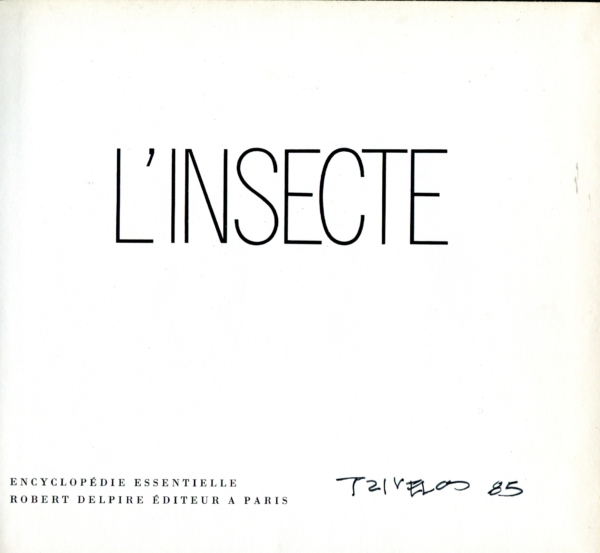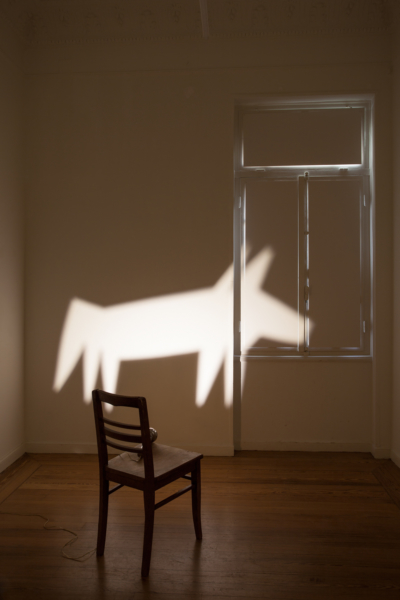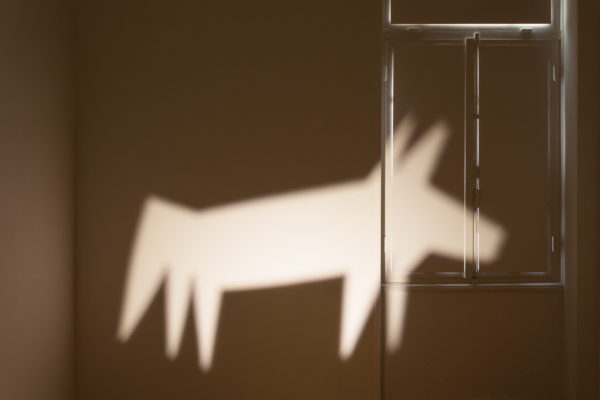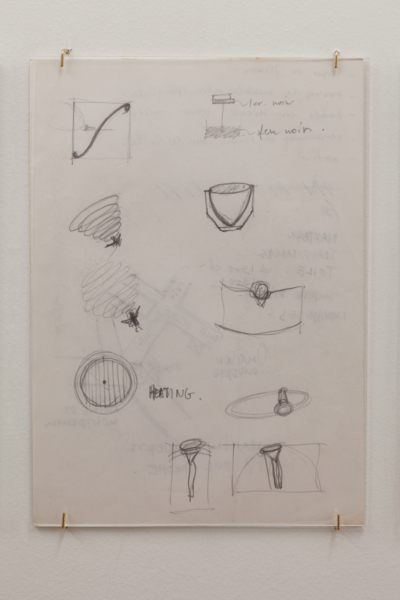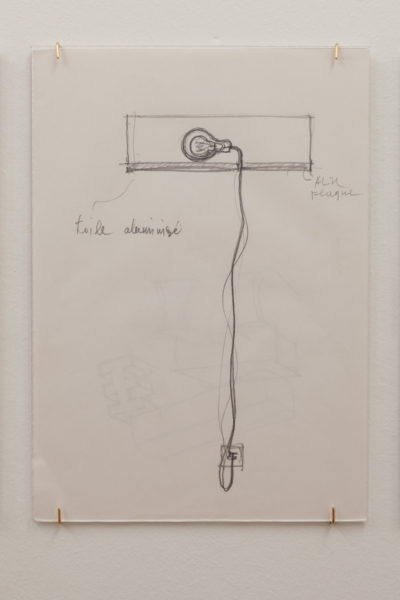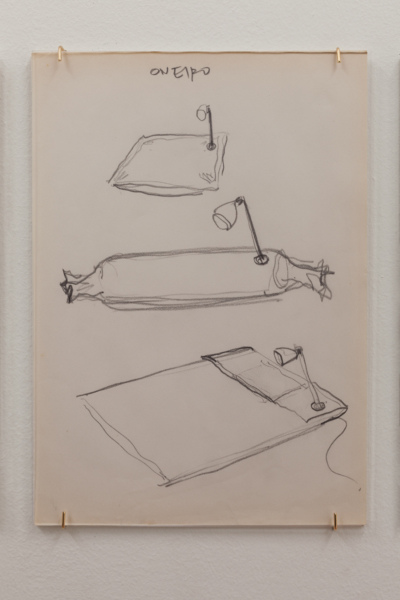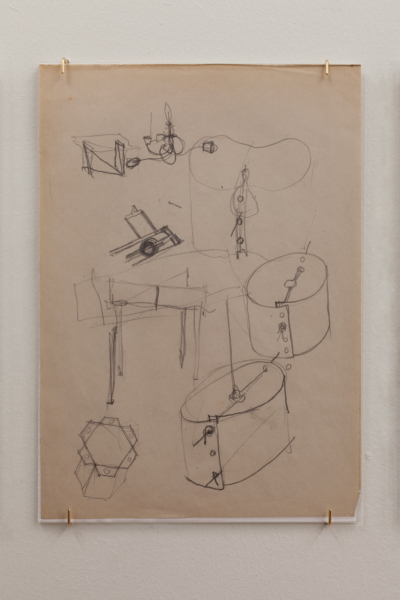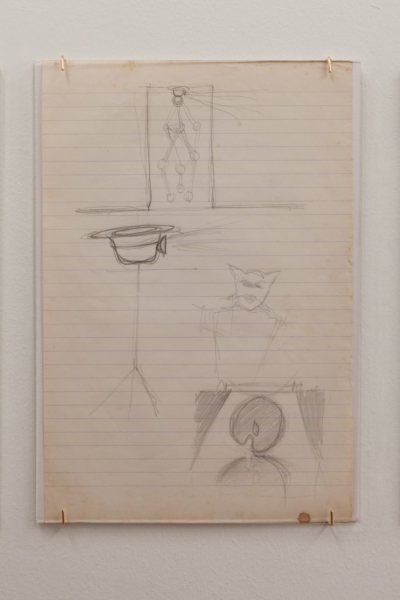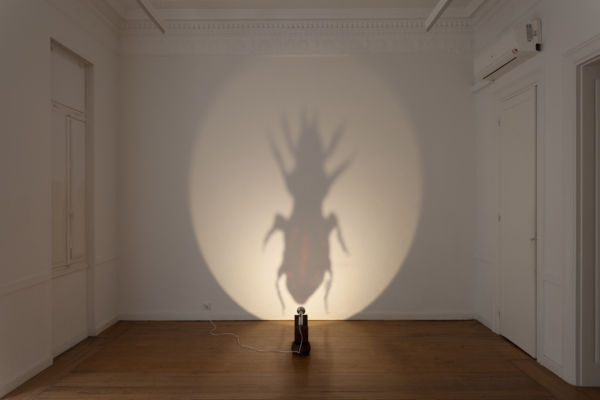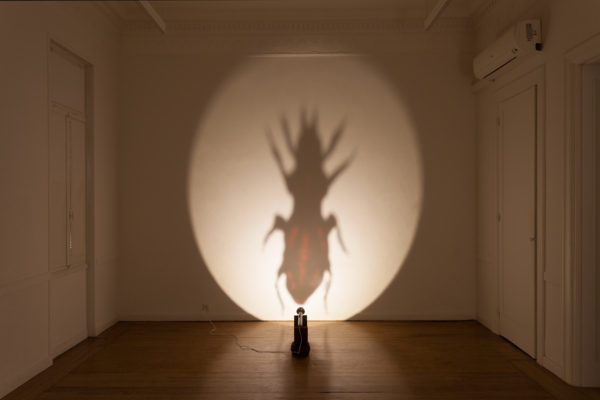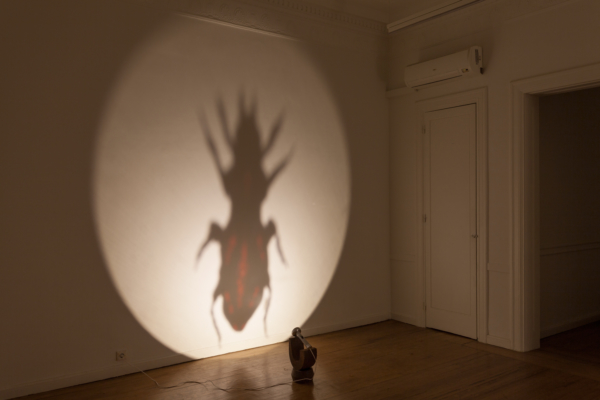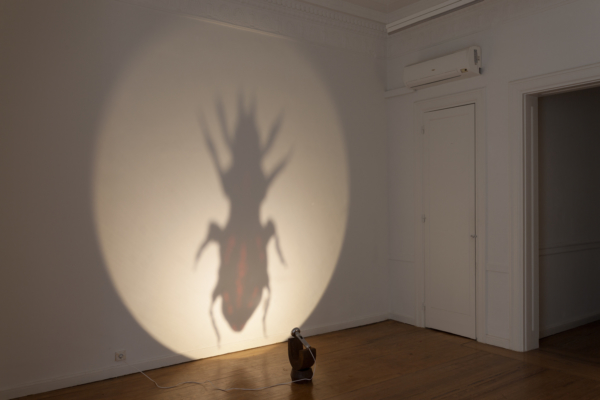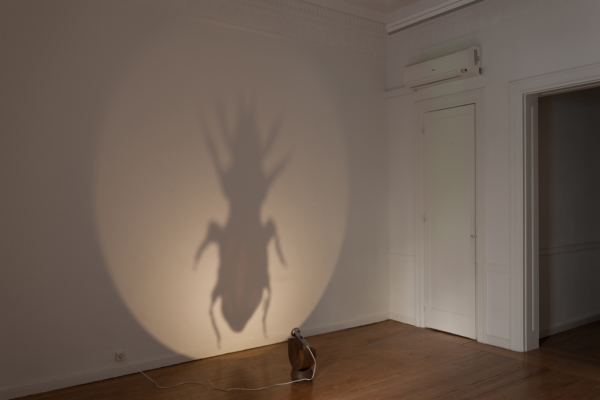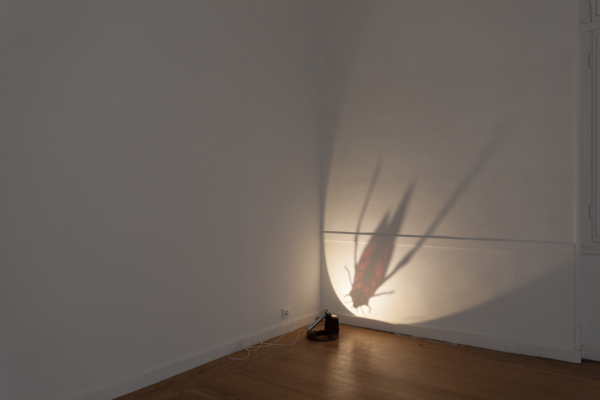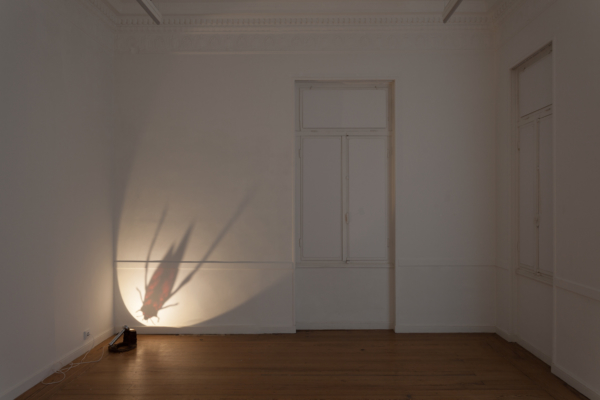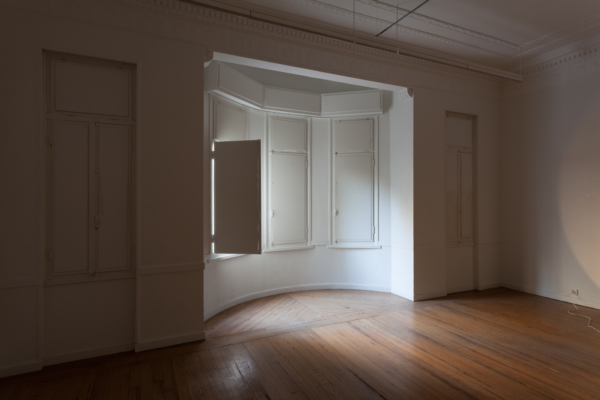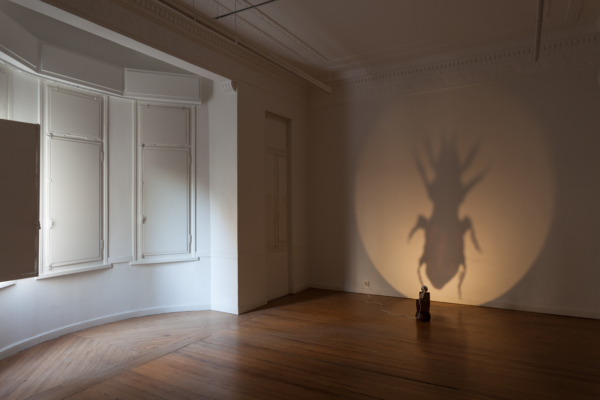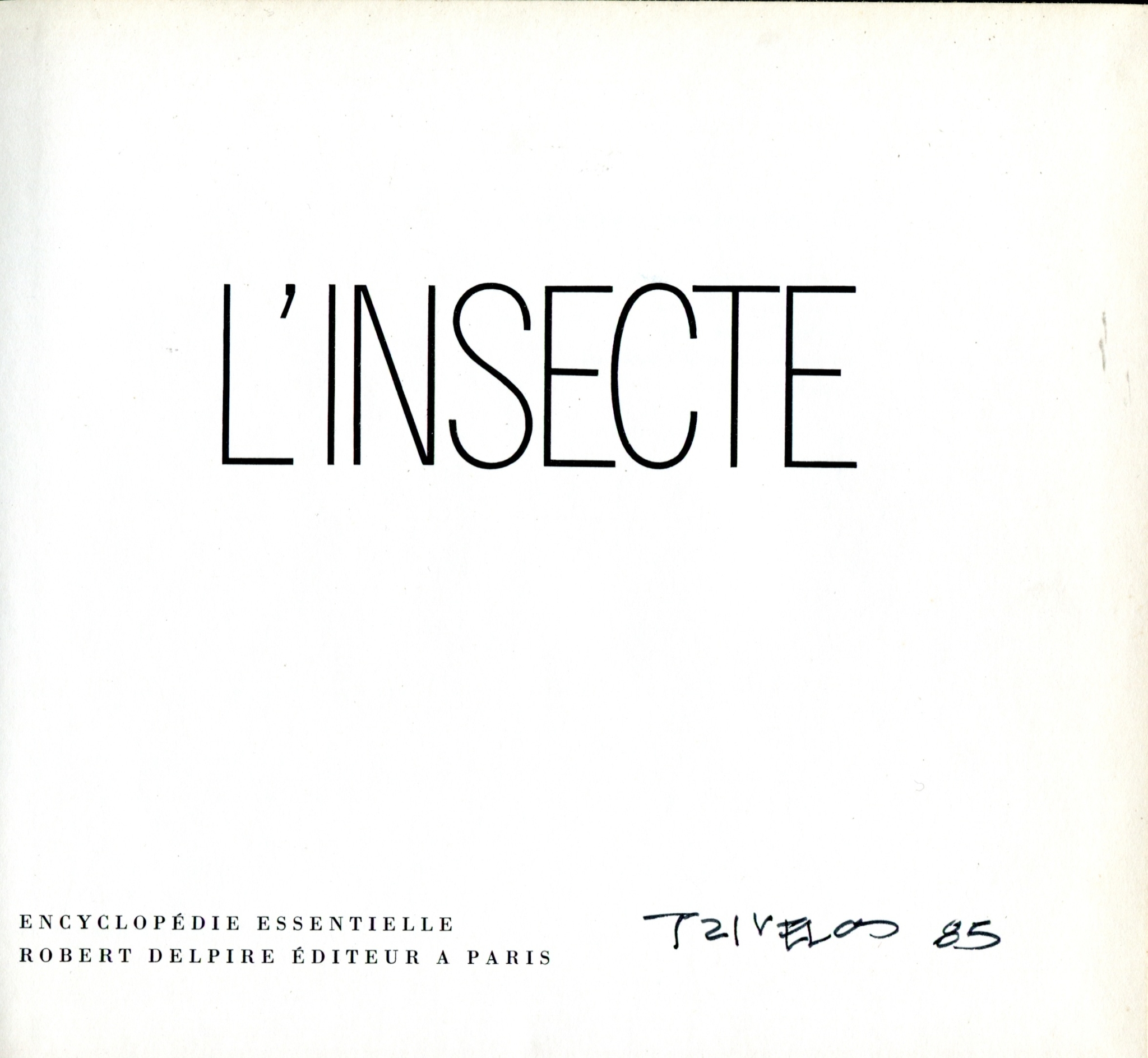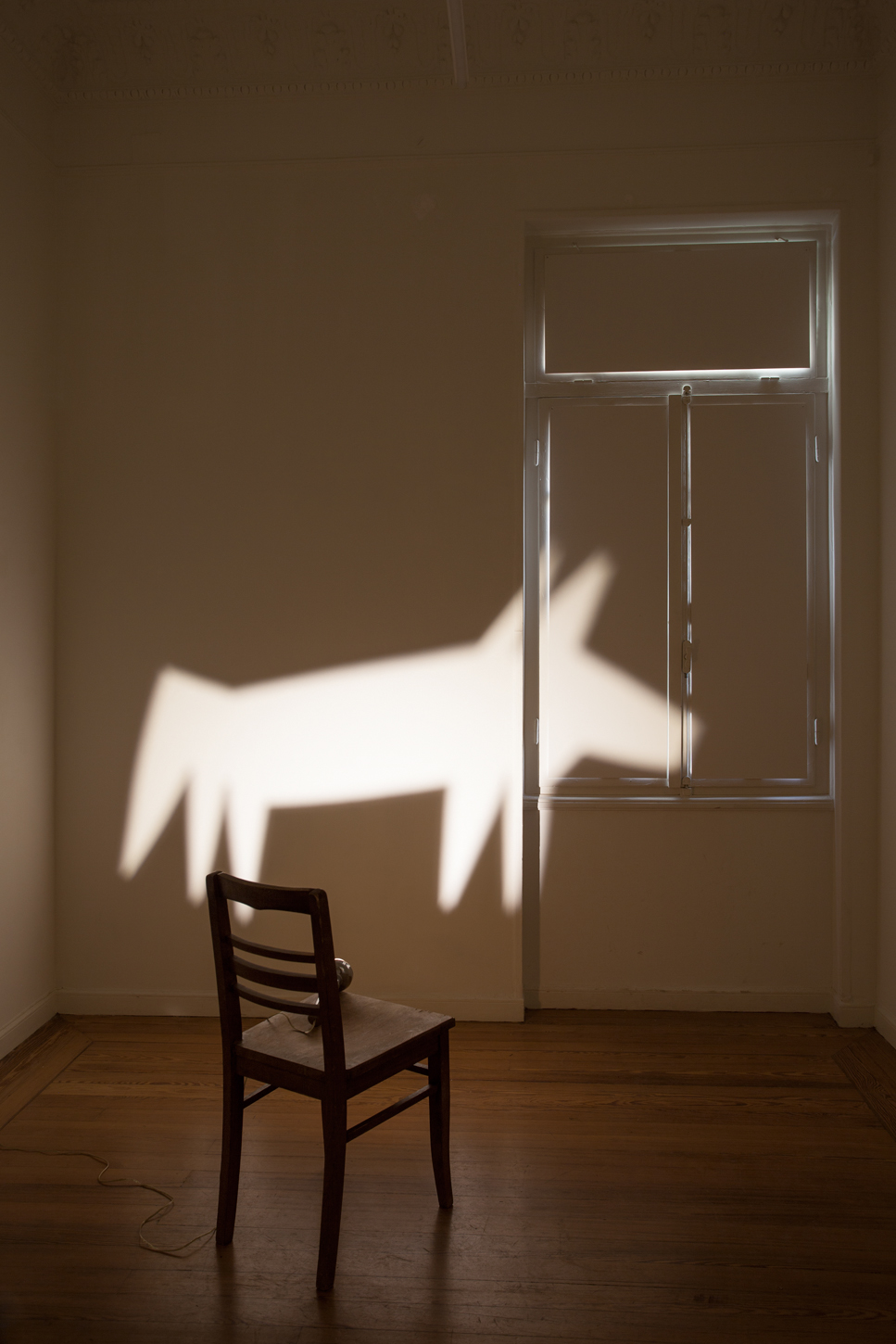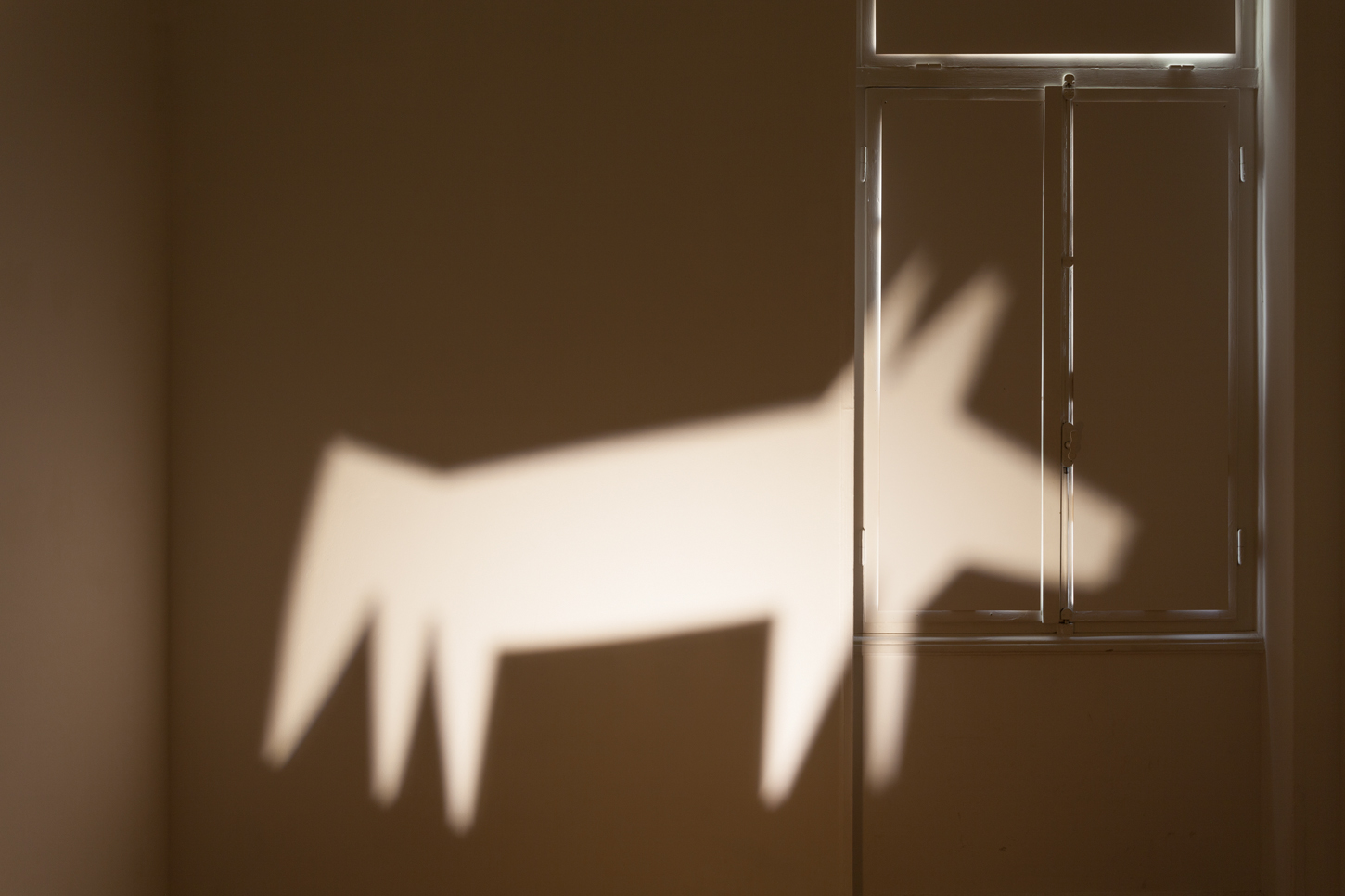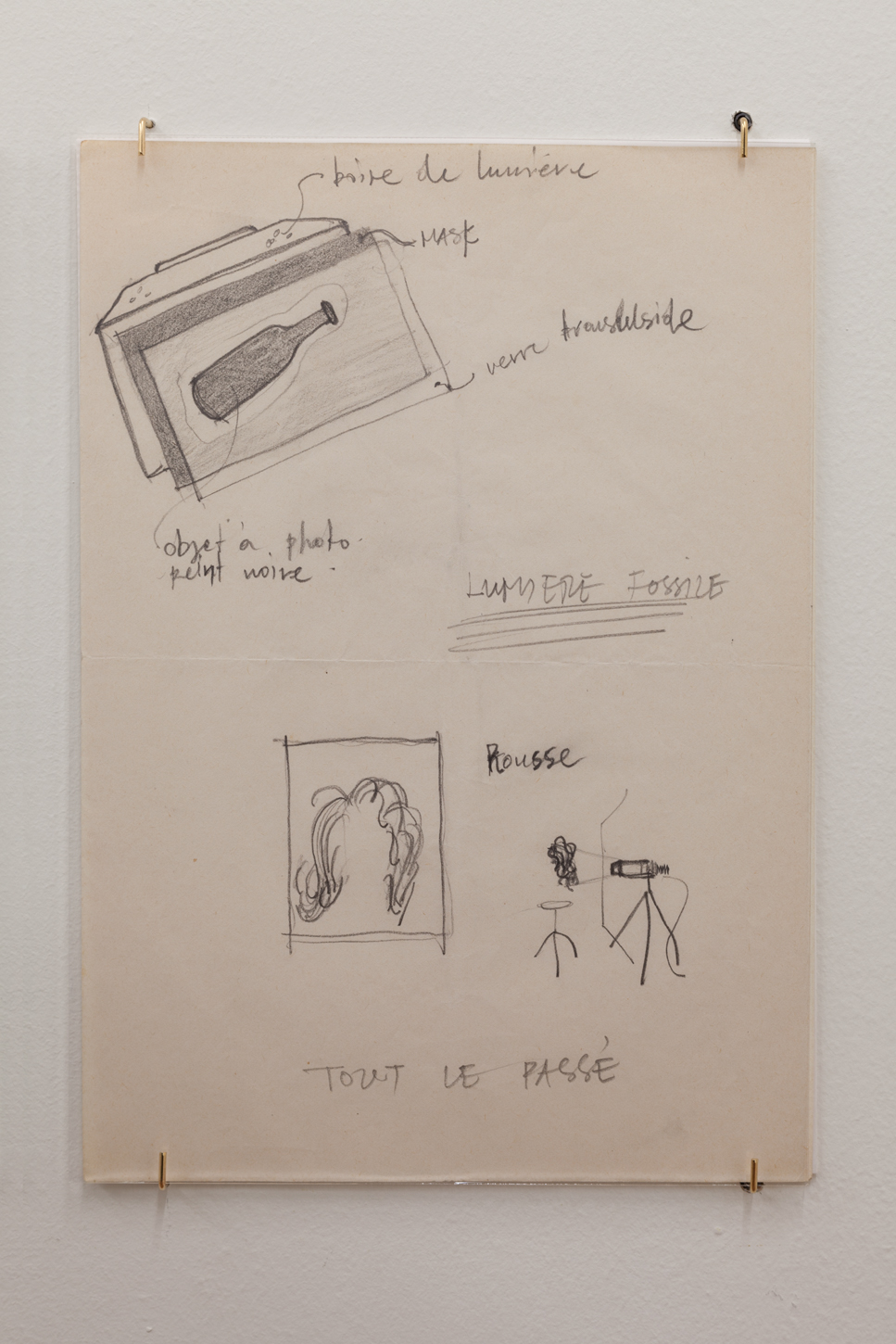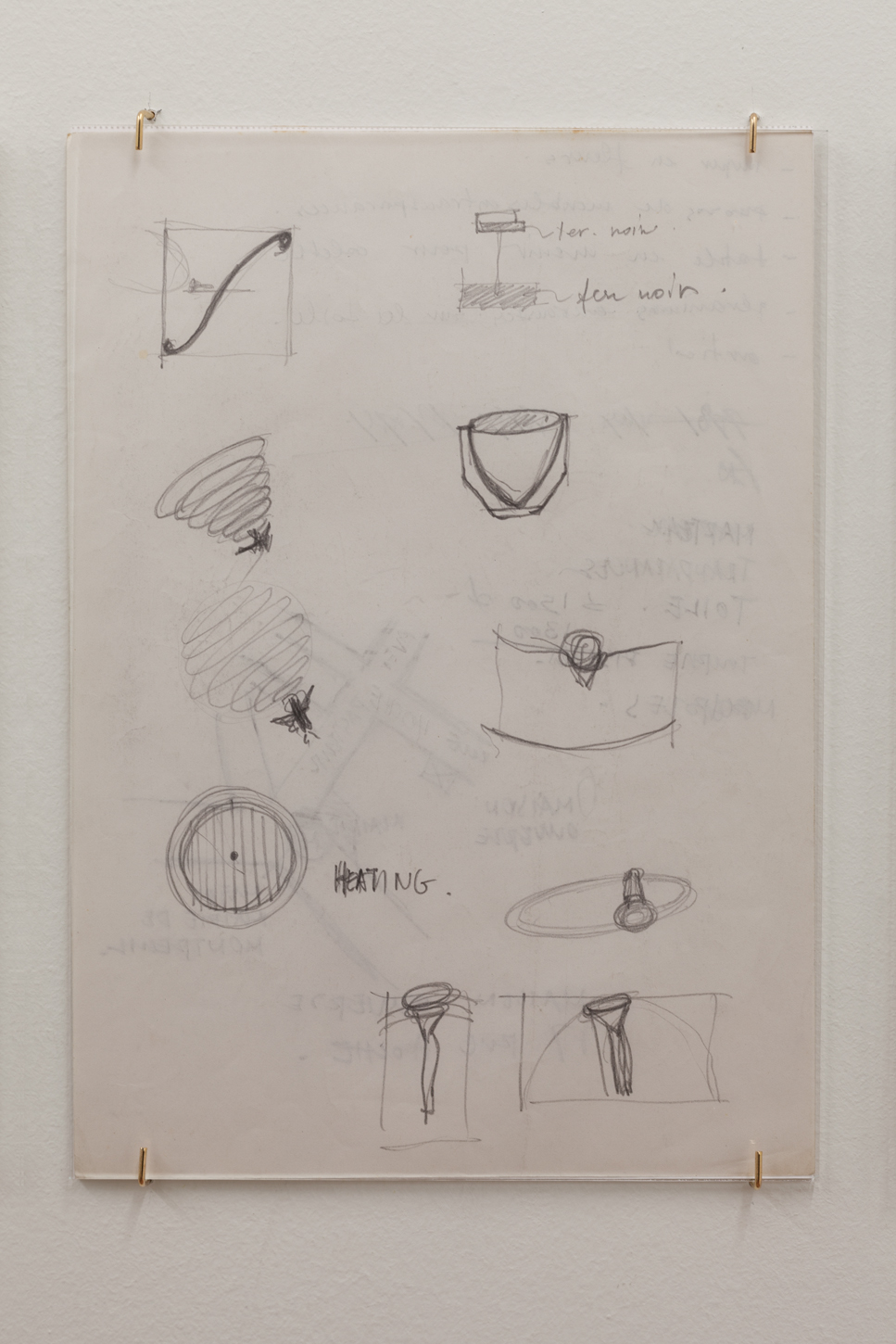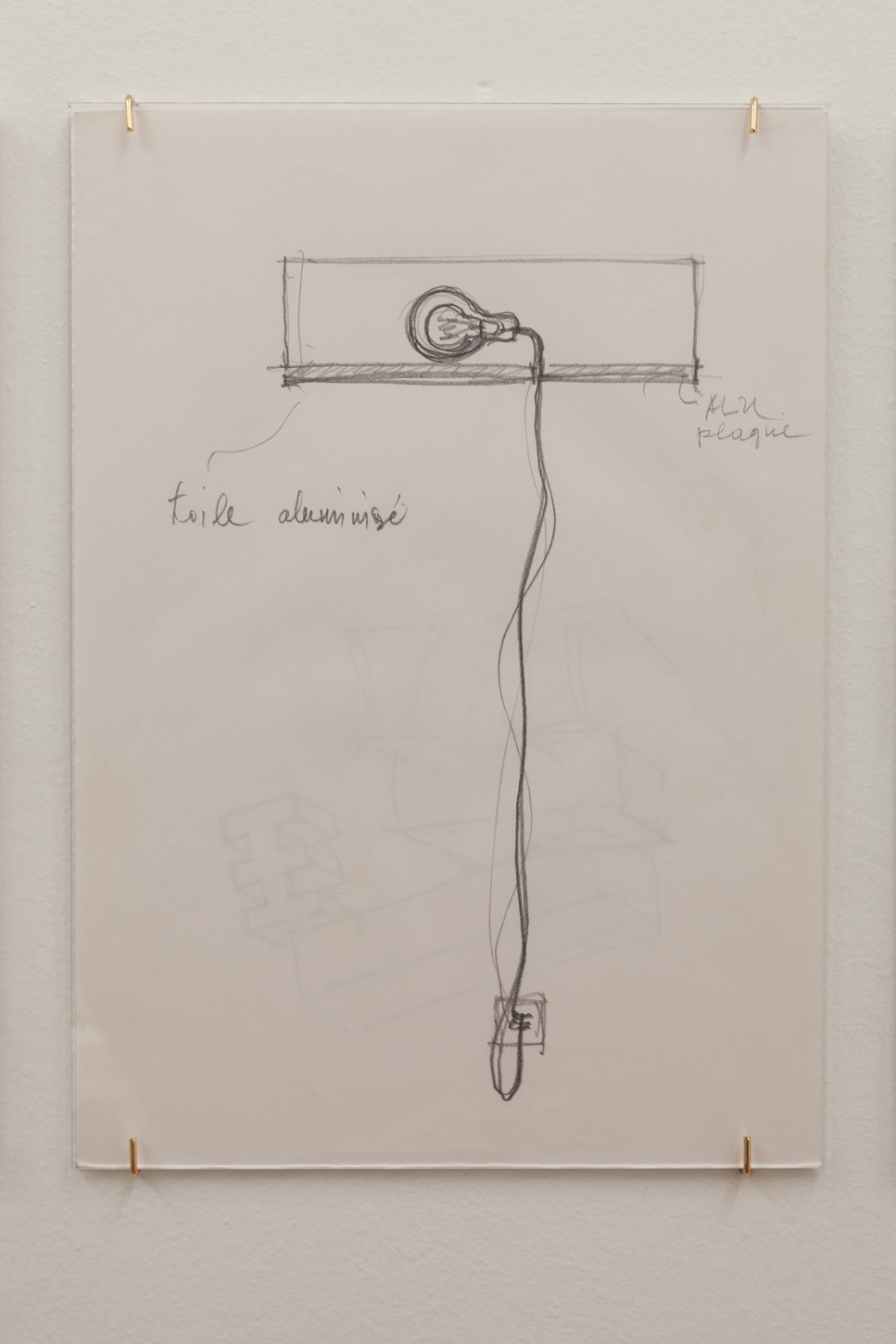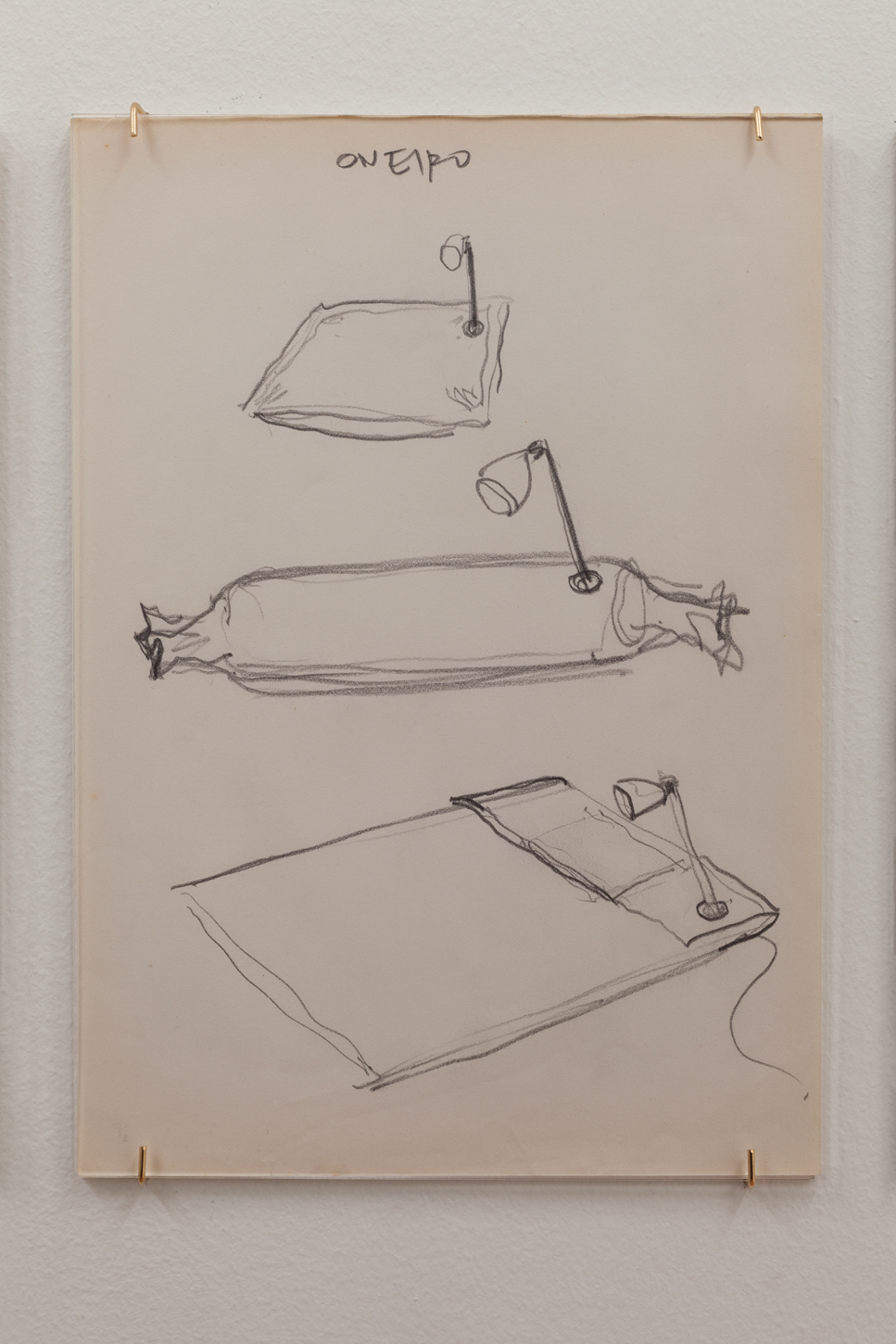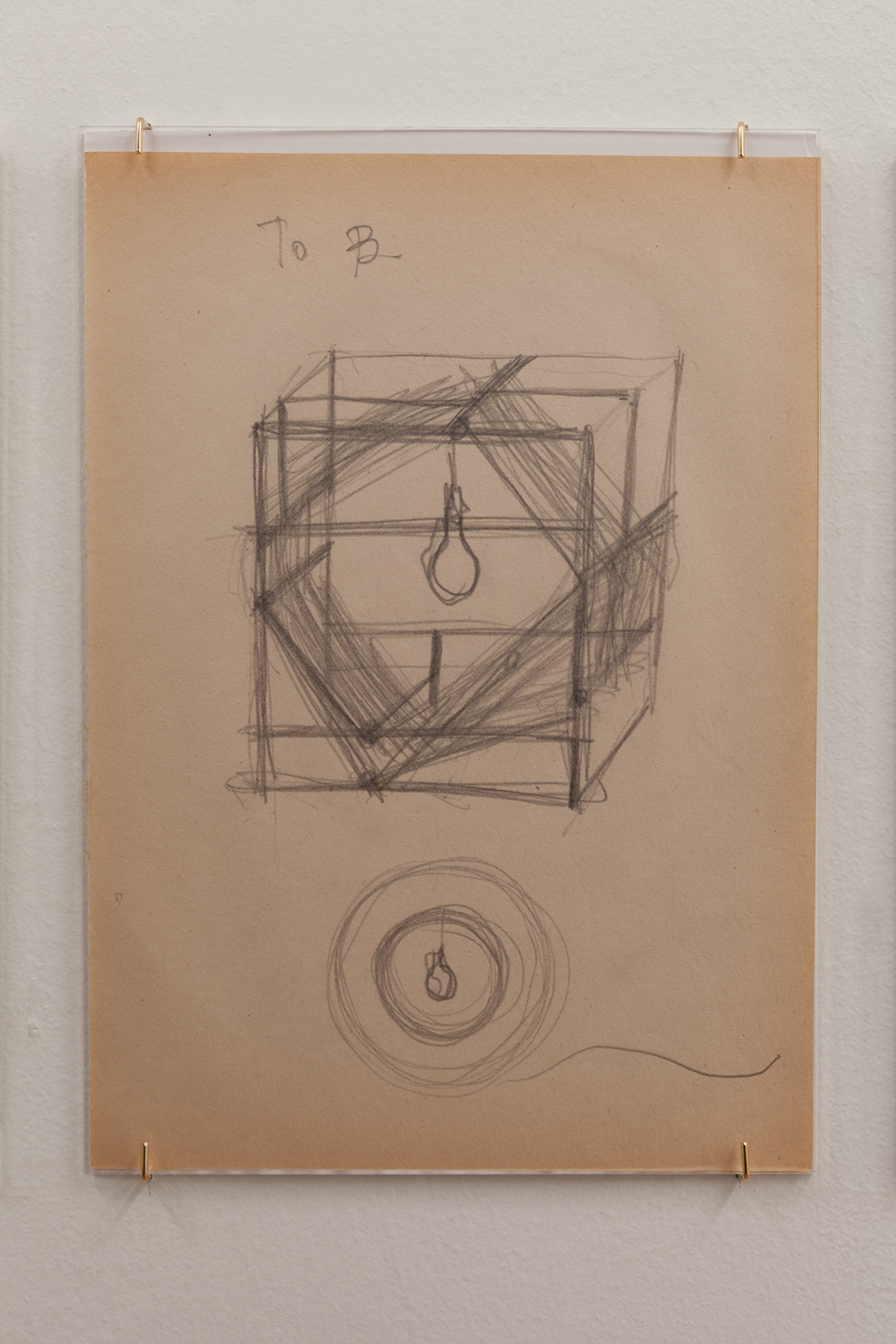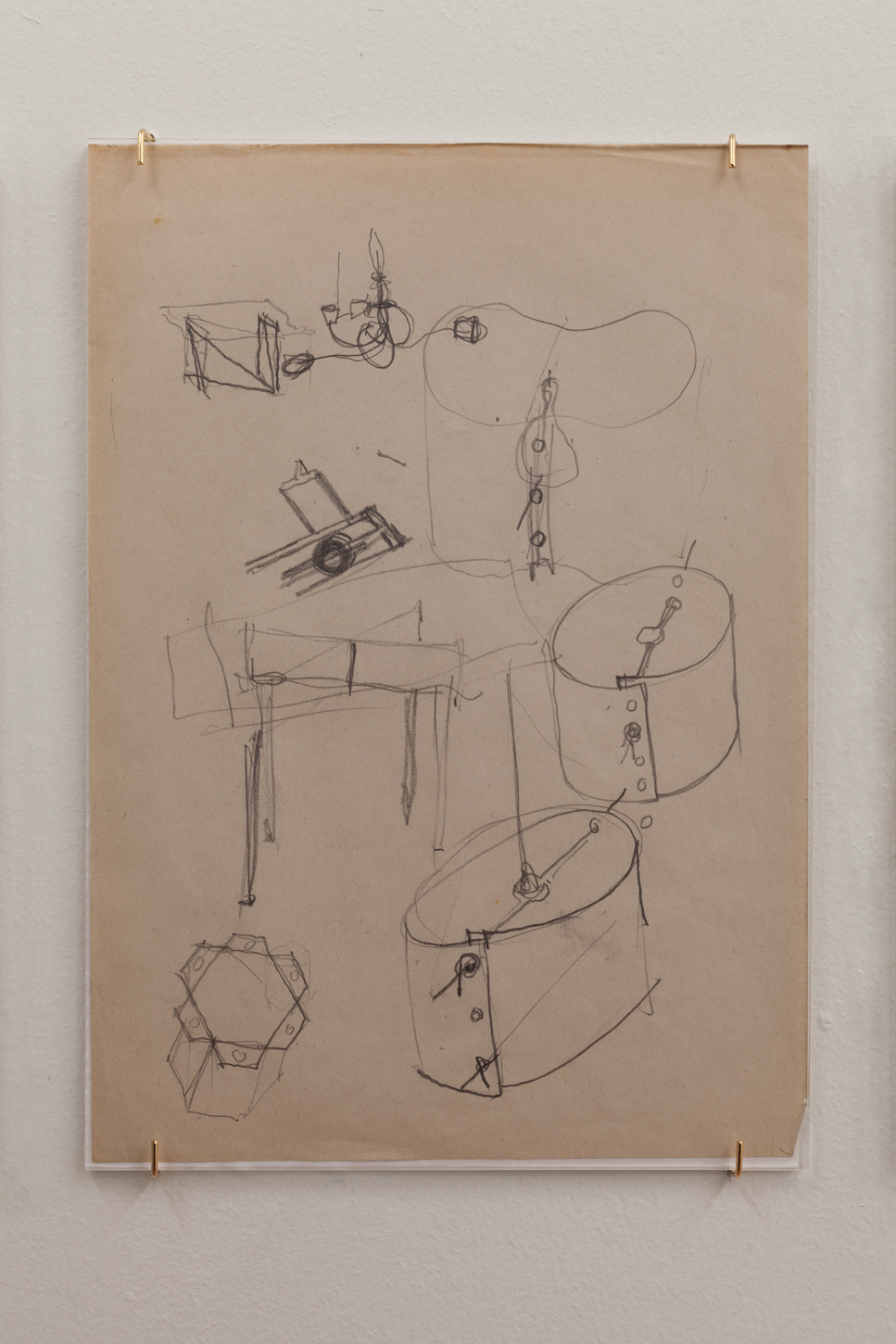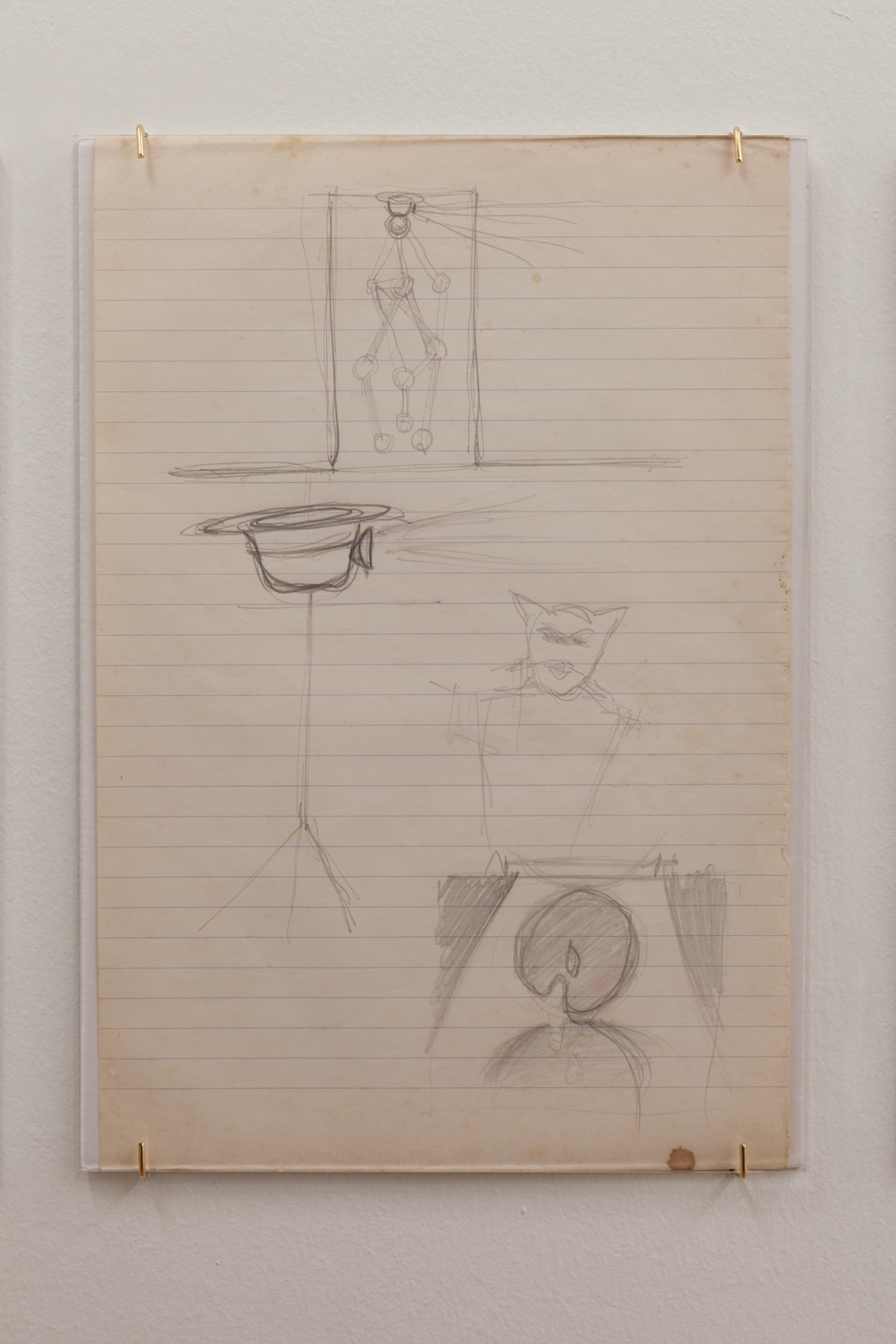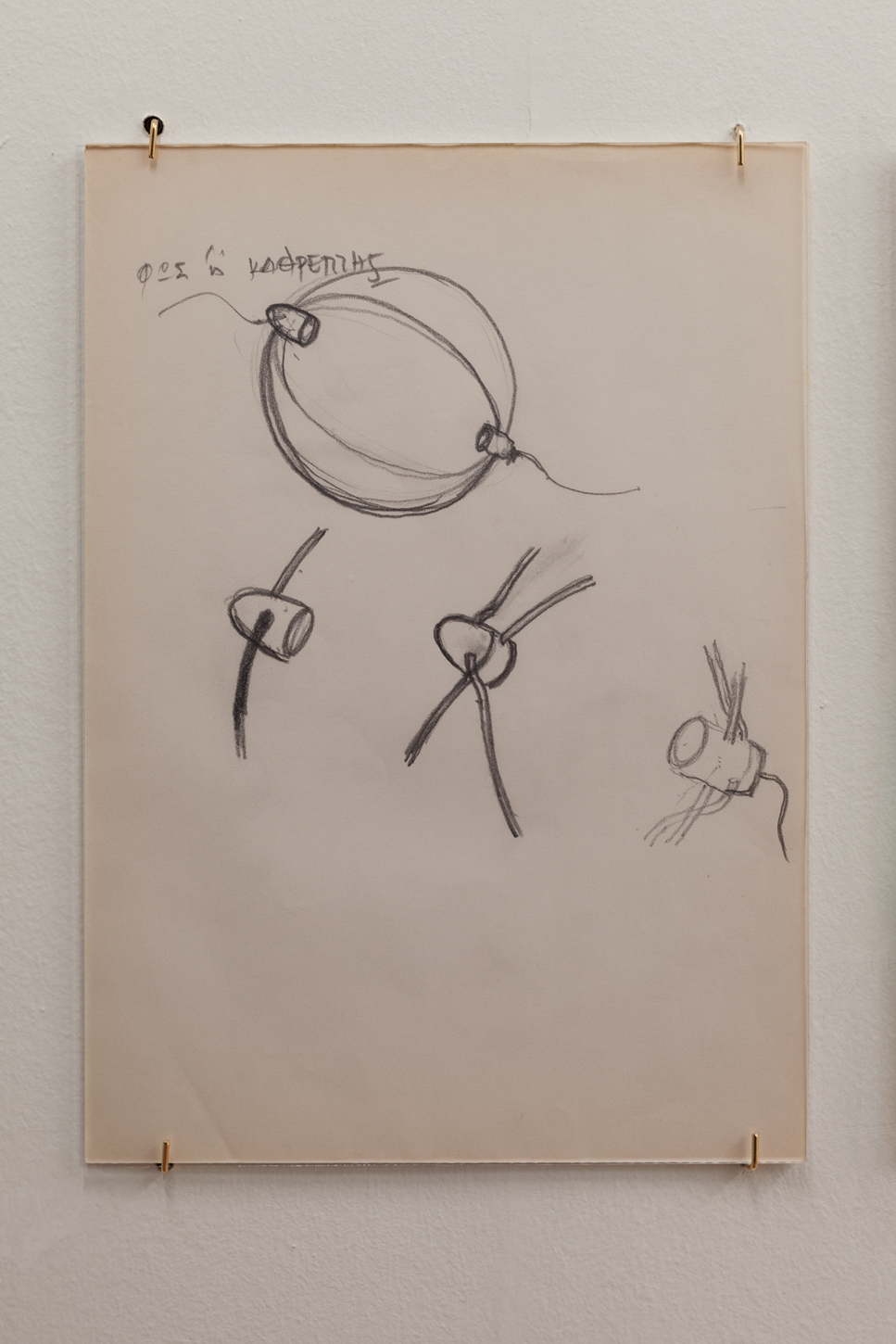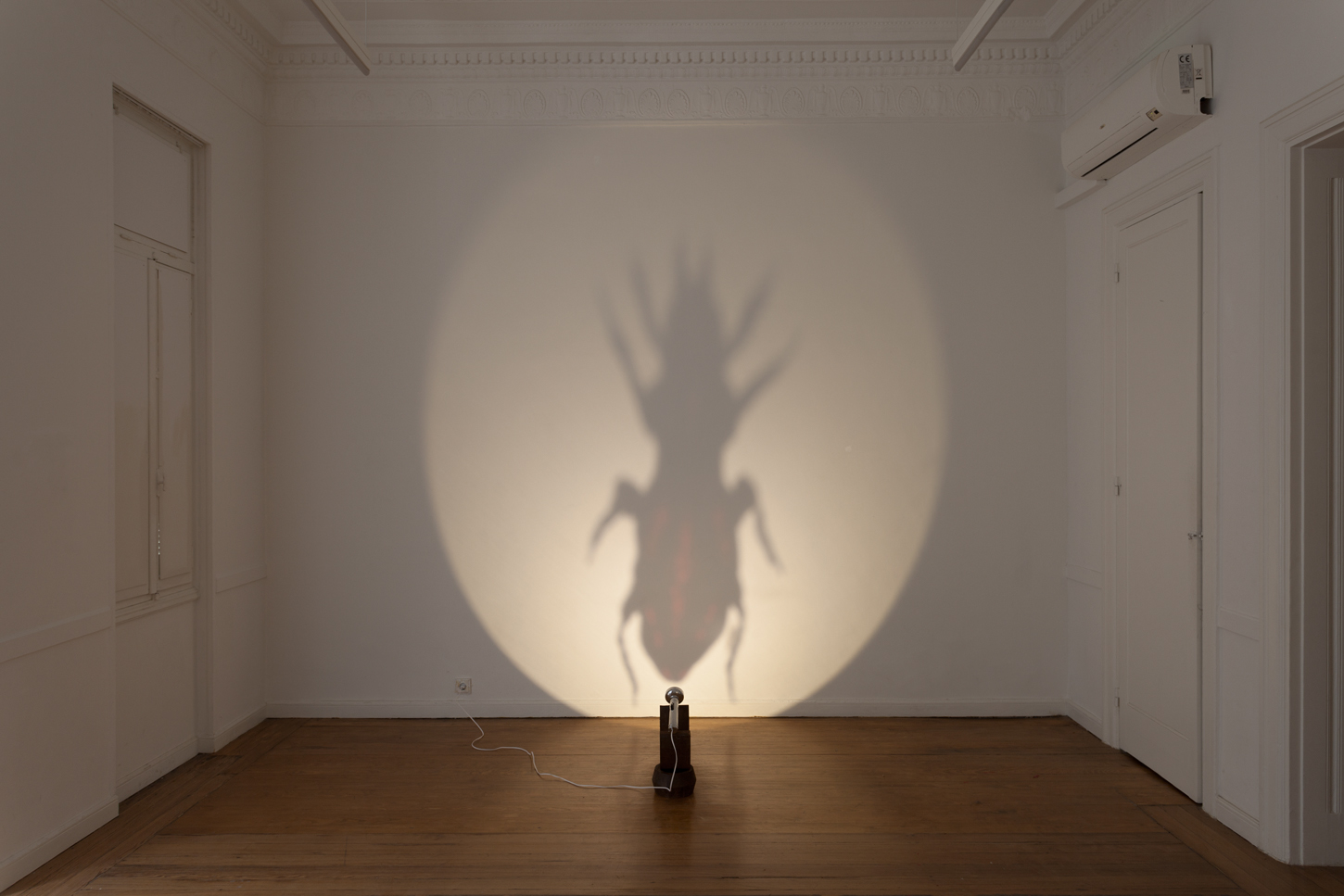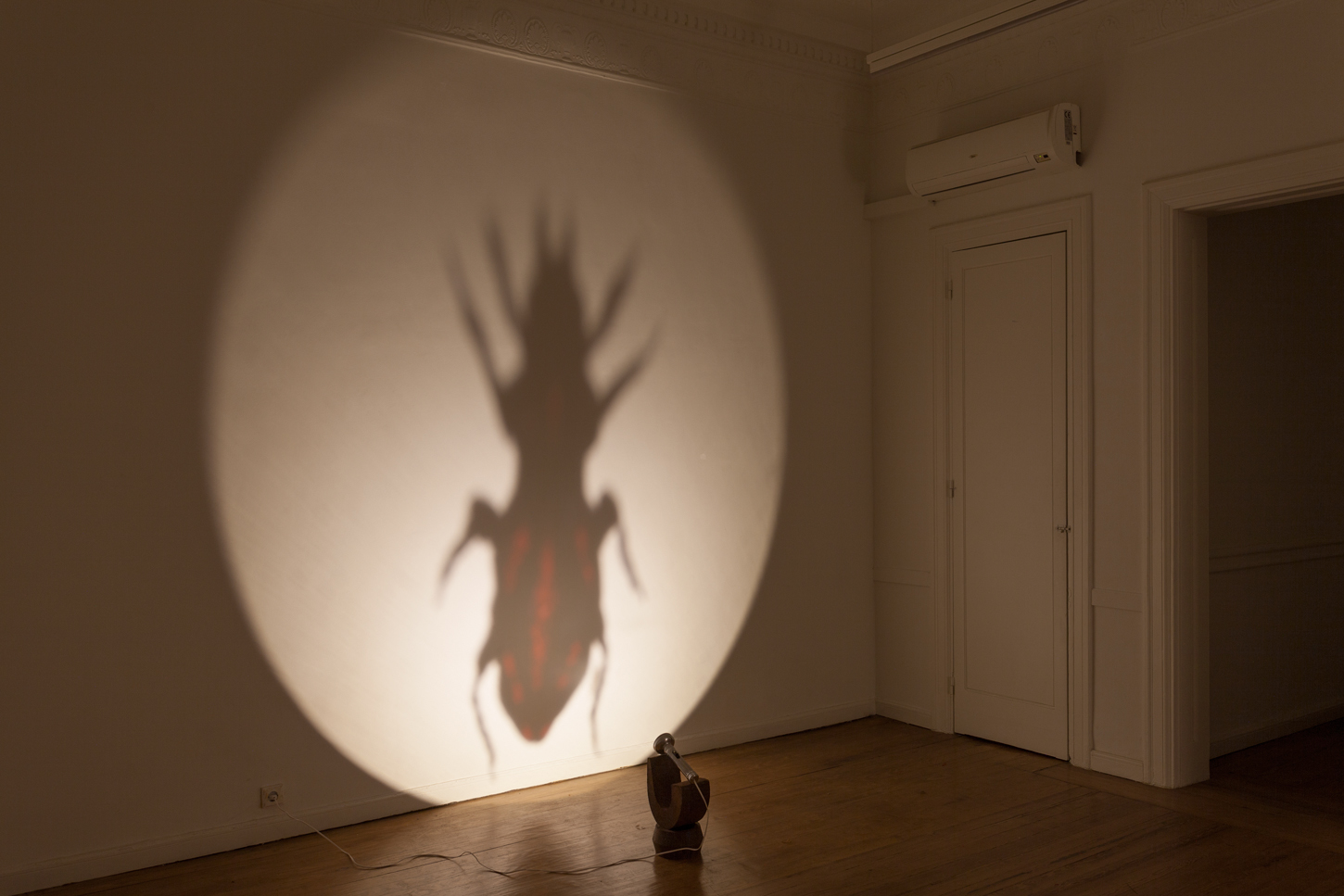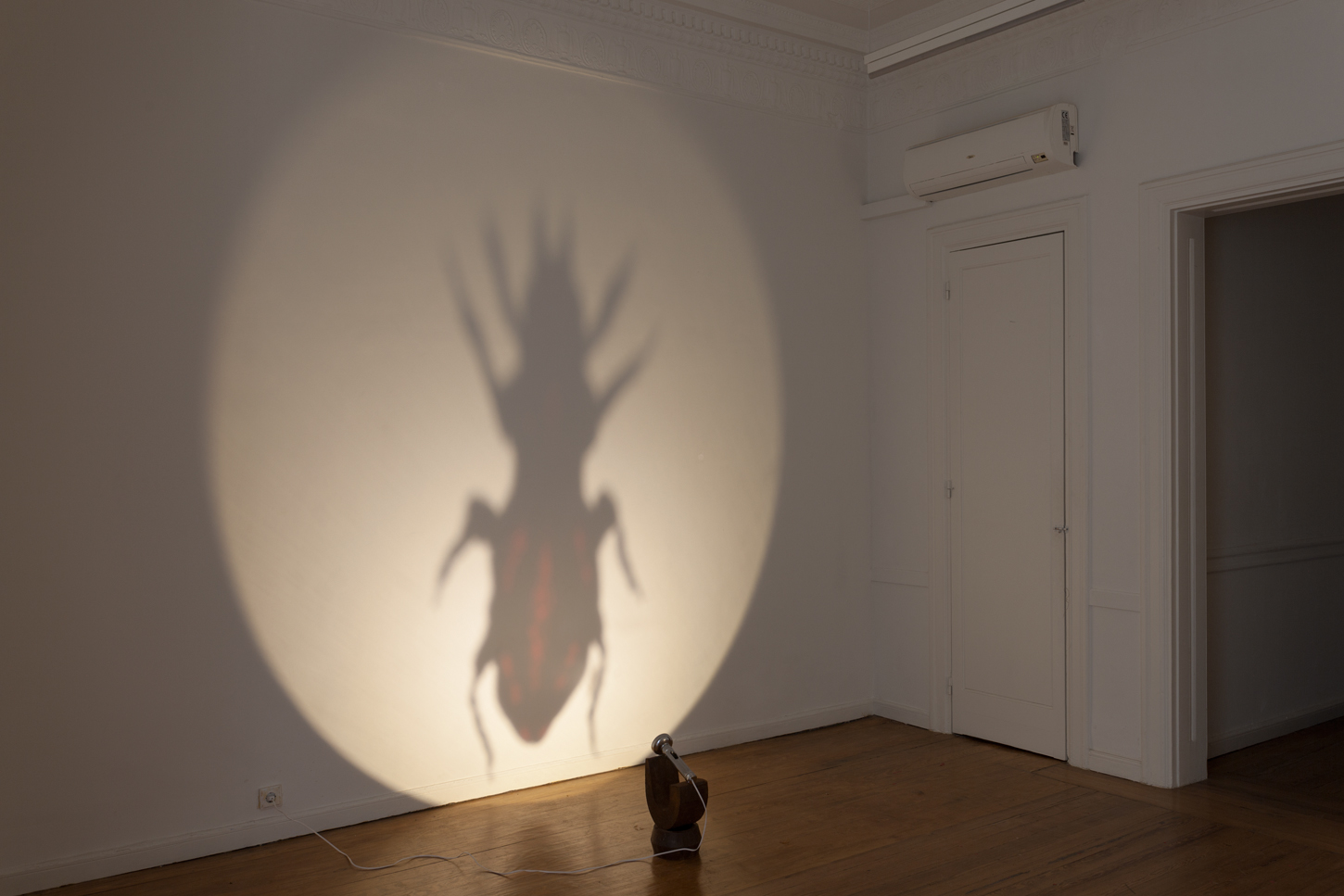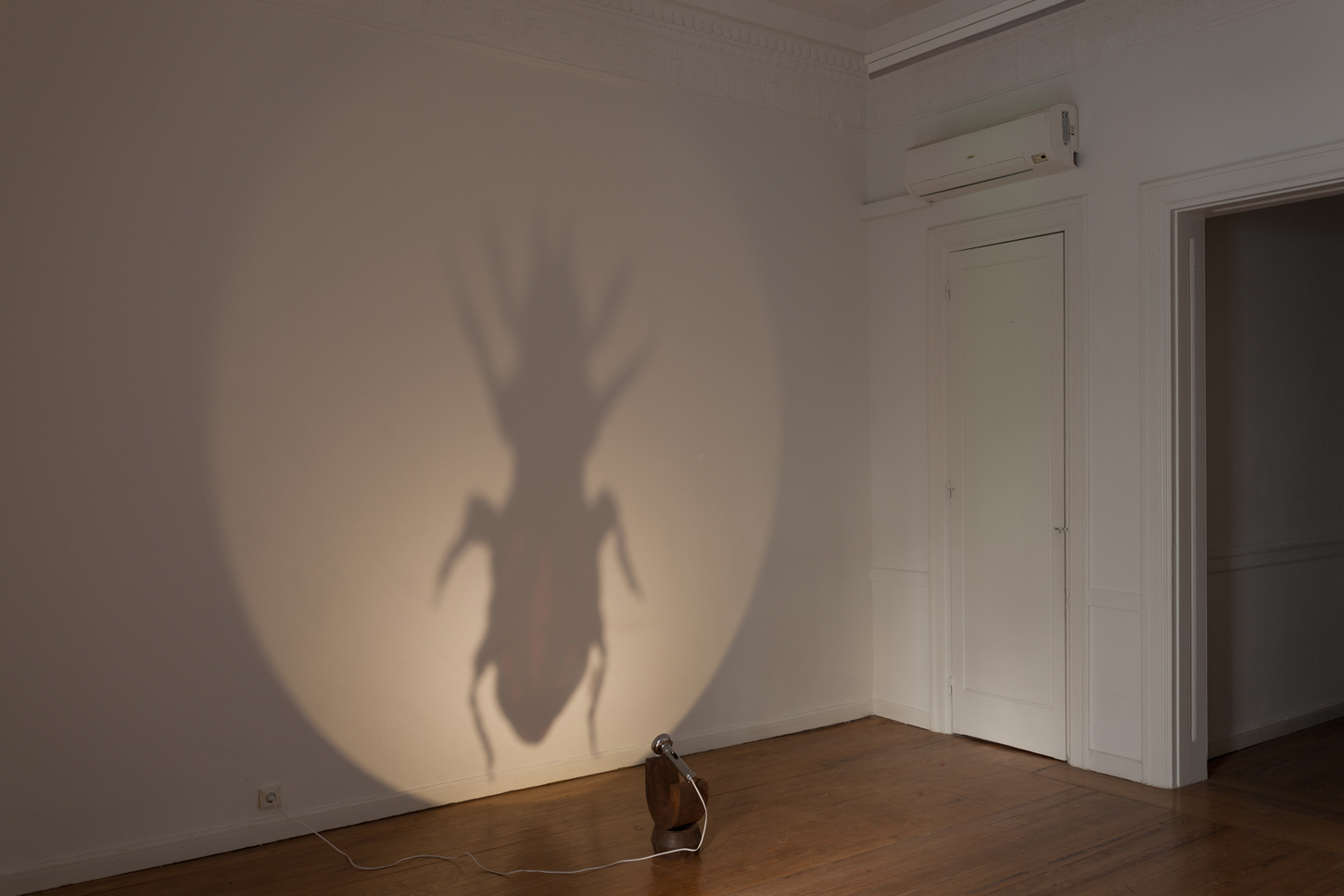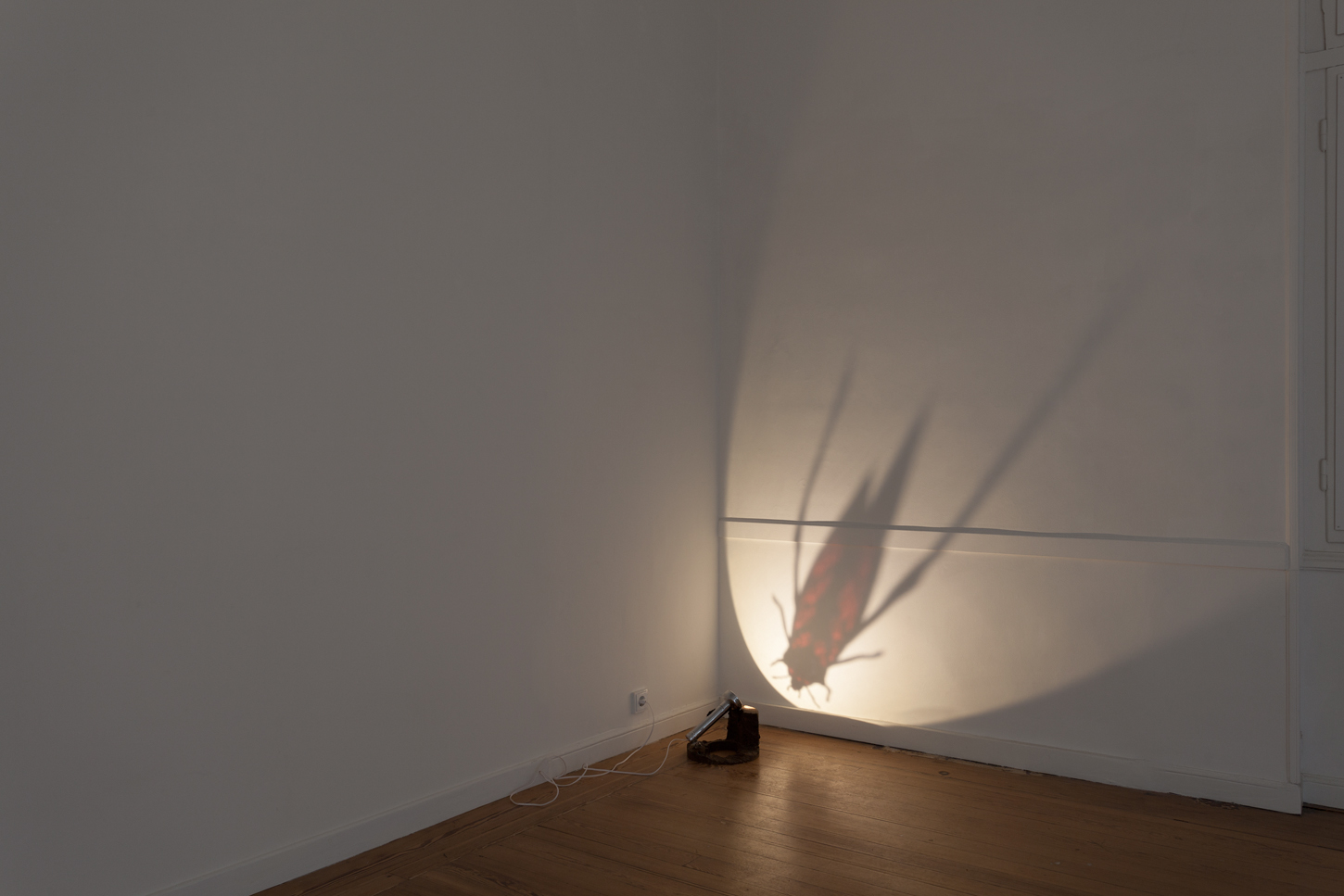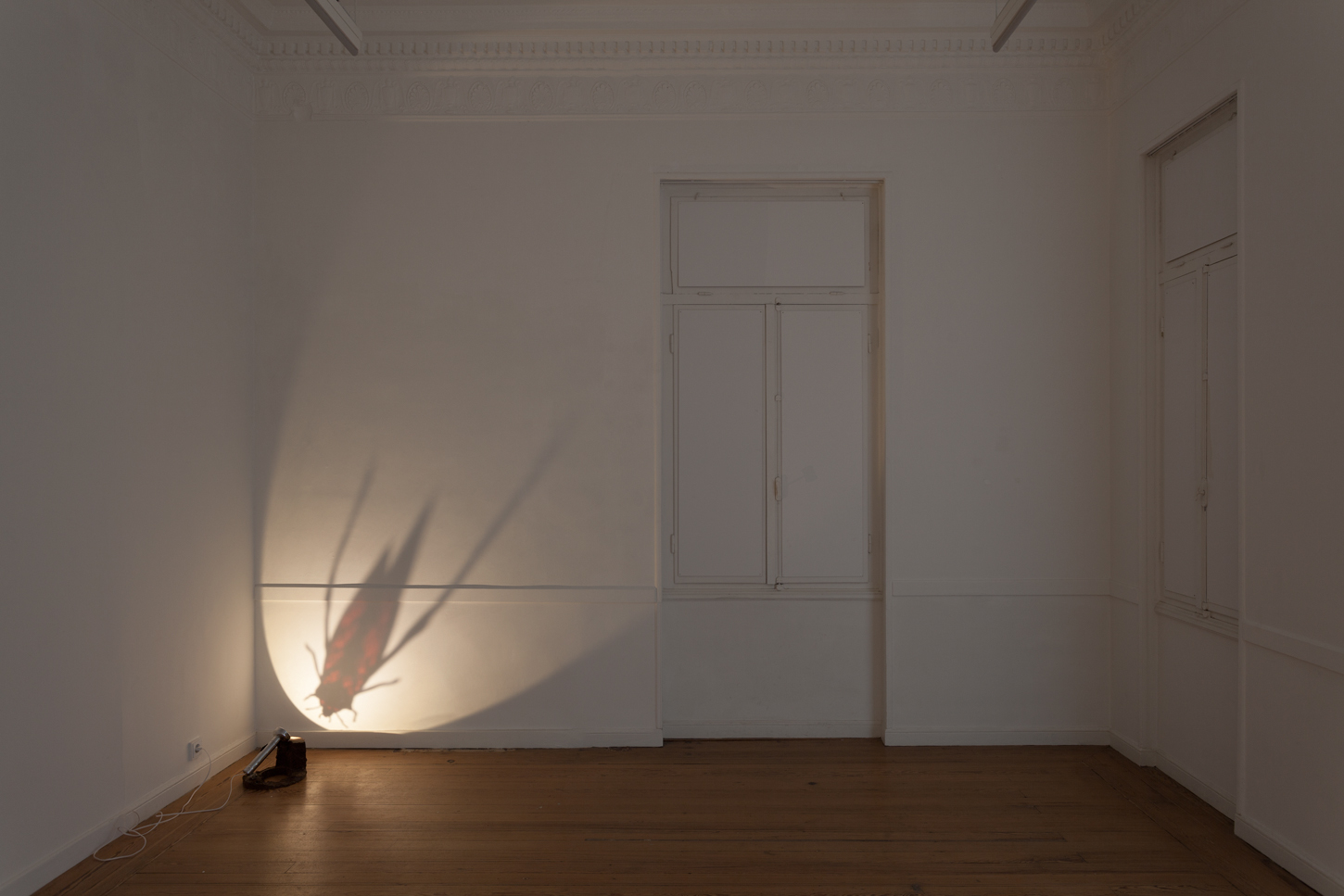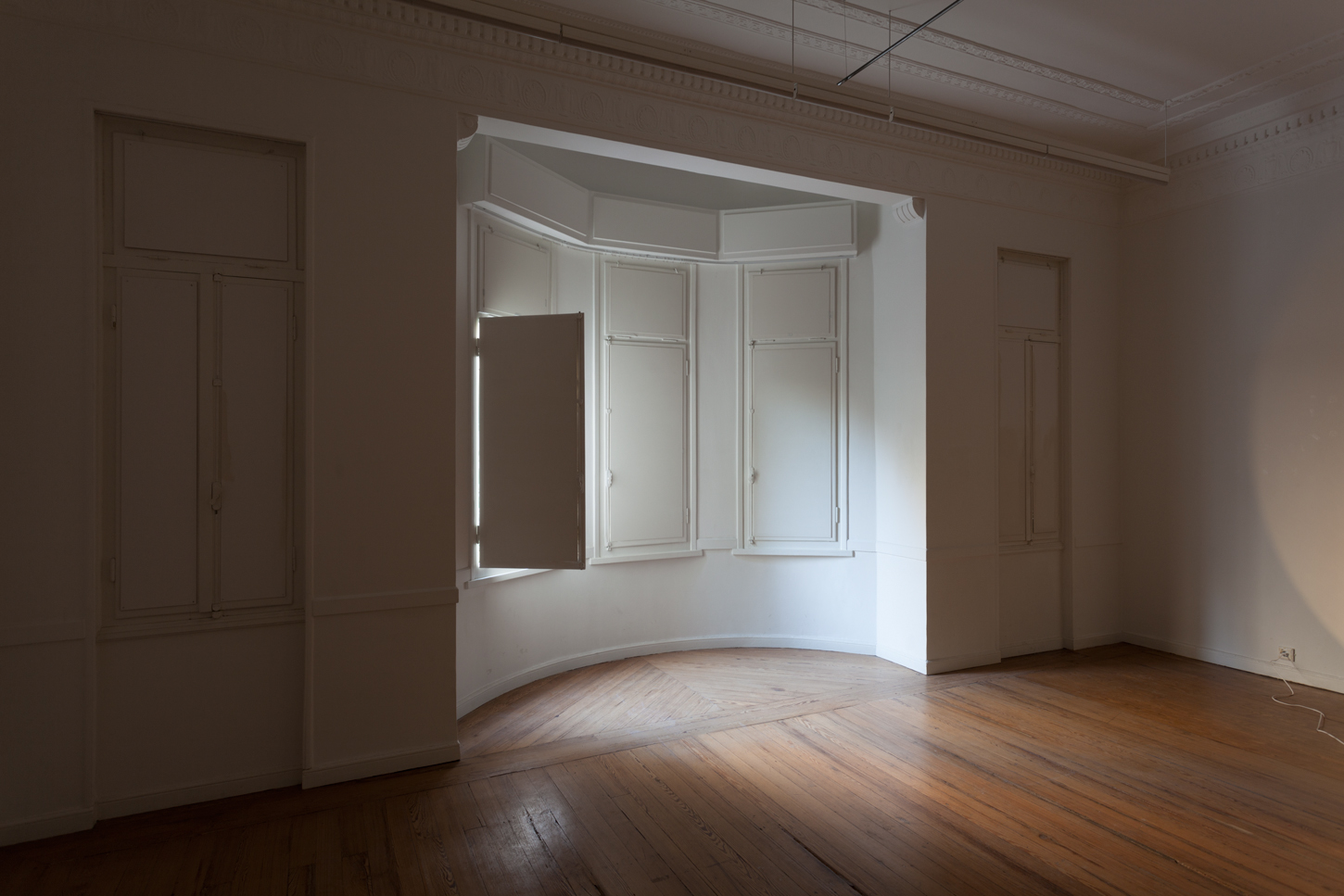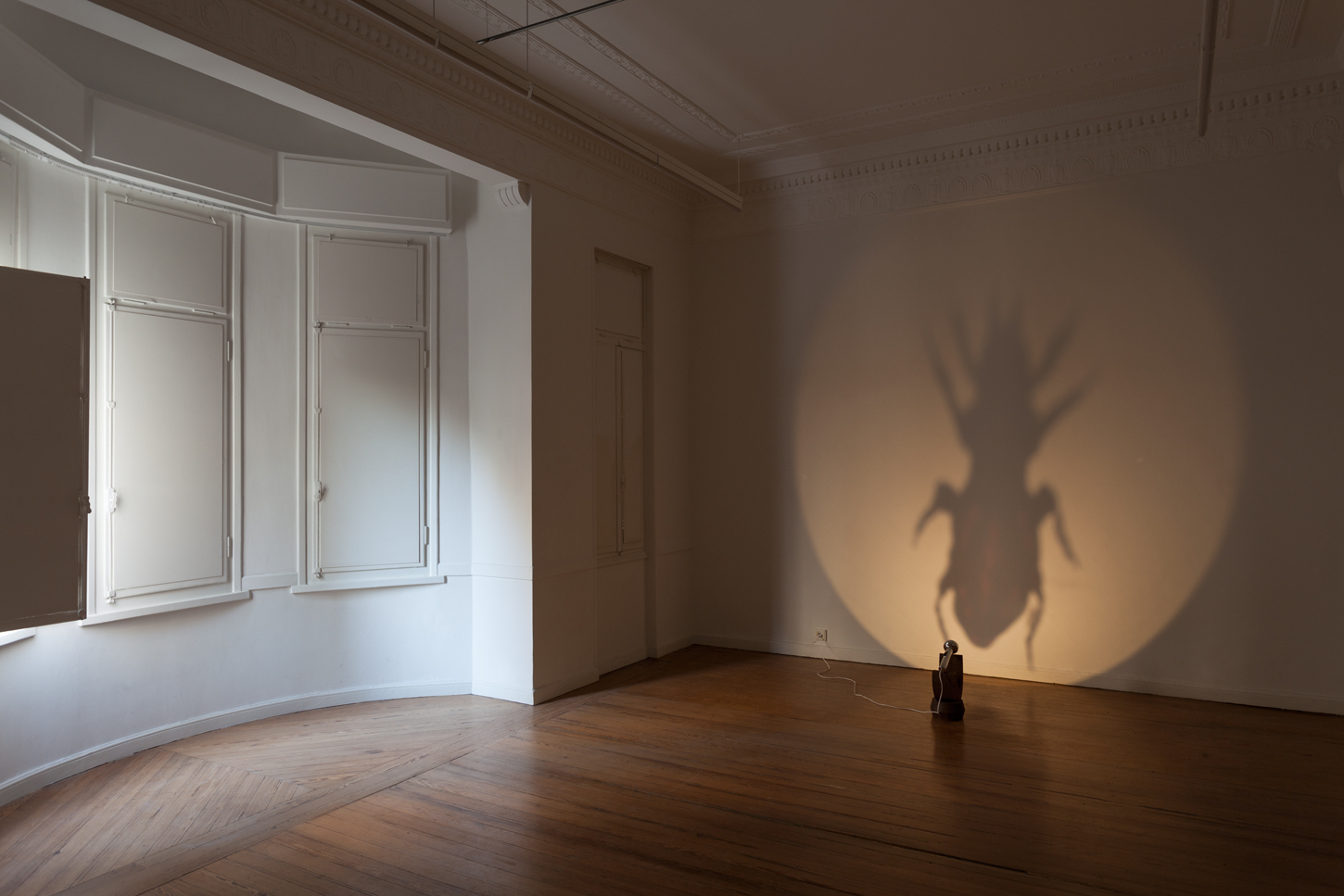***
An exhibition in three parts, in celebration of pioneering artist Christos Tzivelos (1949-1995)
Christos Tzivelos : Pour tromper le temps
Melas Martinos
Pandrossou 50
Christos Tzivelos: The nights are black as ink
and
Kitty Kraus
Radio Athènes
Petraki 15
Christos Tzivelos: Insect
Akwa Ibom
Valtetsiou 35
***
Sometimes, a lot of work looks like nothing at all and sometimes slight work can signal prodigious worlds. To work with light may seem immaterial but it requires control of everything around it. The environments encasing it, the backdrops against which it becomes scene, the openings that allow for other light to provoke it. These are all heavyset, wedged, stationary, defiant and reluctant structures. If the light is to be graciously received or received at all, they require adjustment. Whatever that might be: architectural, cosmetic, ergonomic, temporary, permanent, expensive, cheap, involving light gels, curtains, walls built, bricks laid, blinds installed and drawn, transparencies made opaque, openings carved out, pathways created for the light to enter or exit; these form part of the light in its journey to find a guard, its eventual blockade. Together with the lightsource, environments are locked in a siege that has felt cruel or tender at times, and which can motion anything. The two, will always be codependent, and at the same time capable of great freedom, and great feeling.
In Insect, thin painted mdf boards are fitted on the windows to block out the light. These were cut, painted, and nailed on the window frames. Where outside light would enter the room through thin slithers between the windows’s separable parts, were painted by thick paint which dried solid. Each swath applied produced a little more darkness, erased a little more lightness, until the room was closed. The work was hard on the wood, and put the glass at risk, and yet now these shields look like they’ve always been there, and like nothing much was done to the room. But now, sudenly, we see a chair, a flashlight, and a lightbulb. More faded, we also see an entombing.
Christos Tzivelos’ installations as we see them today in photographs cannot really be taken apart because one cannot separate his self-illuminated sculptures from the sites he chose to display them in, and the interventions he performed to the architecture. Tzivelos would build walls, create alternate floors, adjust his supports to enhance or antagonise what was there before. He achieved practical results this way (controlled the light and our attention) but more so he tuned the rooms to a passional pitch. To this day, that pitch can be felt, sharply, in shards, or as a soft wave rushing over us or springing and spreading from within, but still, it cannot easily be attributed or orientated. In truth, what is it? And what is it not? Where does it begin, and where does it end?
As much as this pitch might appear abstracted and levitating in its own plane, it finds associations and teases origins in familiar places. In this series of works where flashlights cast shadows to the walls, a theatre play is put on except it lacks its usual players. It holds a line that goes back to found pitches, found situations, found encasings of light. The insect series draws in moths attracted to the lamp above the dining room table at night, and thick island rocky walls tickled by geckos, nightlamps and babies, windswept thyme bushes on nights without a moon, small enclosures in buildings without windows, corners of a room observed from the floor where one was laying, and I am sure many more things that can’t be imagined in this text, always emphatically romantic. Propped up by various supports; industrial stools, glass cubes, used paint cans, custom glass cascades, or a chair, the flashlights perform on a wall a revived presence. Their performance extends beyond the wall out to the room, and it doesn’t end. It performs on the presicipe of being switched off a few clicks away or intruded upon by a sudden rush of light pirated in.
A small favor or mistyfying blessing. Unsearchable and autonomous, it feels like something that was there before, but will quickly pass and no longer be. We know upon seeing it, that we won’t get enough of its presence, as it is improbable and ephemeral, and decidedly not practical. Yet by the time that it’ll be gone, we’ll be left perfectly satiated by its limitations.
***
Christos Tzivelos (1949 – 1995) was an artist and set designer active in Athens and Paris from 1972 until his untimely death. He graduated in interior design from the Athens Technological Group, commonly known as Doxiadis School, in 1971; in fine art from the École Nationale Supérieure des Beaux-Arts in 1976; and in architectural engineering from the École Nationale Supérieure d’Architecture de Paris-La Vilette in 1990. He worked as an artist assistant for Costas Tsoclis and later Takis. While participating in exhibitions, he also designed theatre sets for directors Gilberte Tsai and Leonidas Strapatsakis for productions in Marseilles, Strasbourg, and Nice. Notable group shows include: ‘À Pierre et Marie: Une Exposition en Travaux’ at an abandoned cathedral in Paris (1982-1984), alongside Robert Barry, Daniel Buren, Tony Cragg, and Dan Graham, among others; ‘Sculptures: Première Approche pour un Parc’ at Fondation Cartier pour l’Art Contemporain, Jouy-en-Josas (1985), alongside Carl Andre, Anthony Caro, Donald Judd, Mario Merz, and Isamu Noguchi, among others; and ‘l’espace, le temps’ at Fondation Danae, Pouilly (1986), alongside Alison Knowles, Charlemagne Palestine, and Ernest T., among others. Of special significance are a series of exhibitions titled ‘Il y a un an,’ curated by Catherine Arthus-Bertrand in Paris, New York, and Rome, initiated in 1985. Notable solo shows include: ‘Pyro’ at Medusa Art Gallery, Athens (1986), ‘Carte Blanche’ at Caisse des Dépôts et Consignations, Paris (1989), and ‘One Man Show’ at Galerie Renos Xippas, Paris (1993). Posthumously, a retrospective exhibition titled ‘Modelling Phenomena’ was organised by Christopher Marinos and Bia Papadopoulou at Benaki Museum in Athens (2017), accompanied by a catalogue designed by Studio Lialios Vazoura, and published under the imprint Big black mountain the darkness never ever comes.
***
With warm thanks to Yiannis Tzivelos, Irini Georgiou, Laurentiu Sarjan, and Aristotelis Mochloulis.
The exhibition was made possible through the support of Carved to Flow Foundation.
